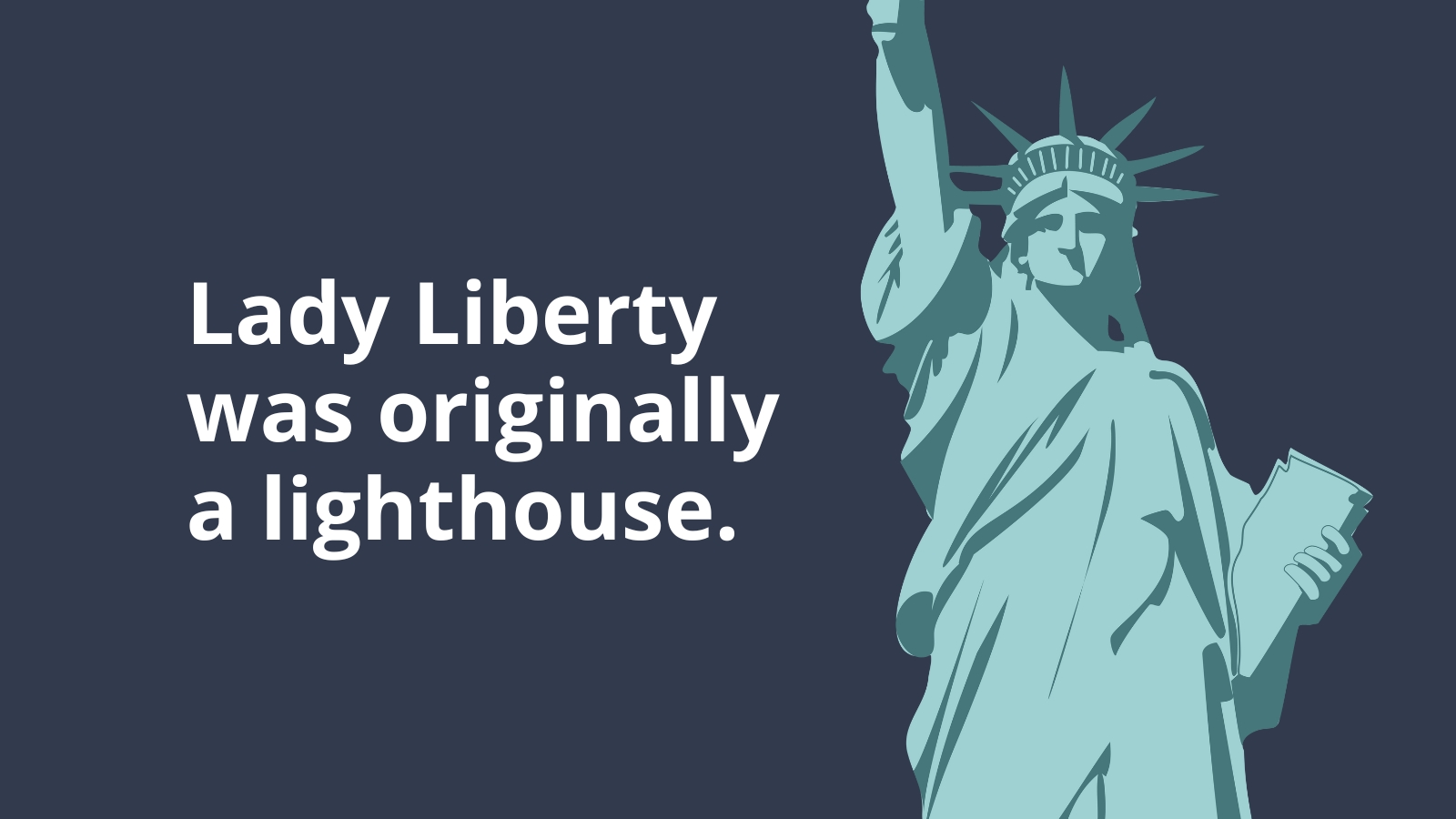On July 4, 1884, the Statue of Liberty was built in New York Harbor and became a fixture in New York City. You might know that the statue originally came from France and that the torch symbolizes freedom, or even that the statue is 305 feet, 1 inch tall. Want to boost your students’ Lady Liberty knowledge? Here are 20 more fun facts about the Statue of Liberty.
Statue of Liberty Facts
Lady Liberty came to the United States in pieces.

Before the statue was put together in New York Harbor, it was built entirely in France, then taken apart, shipped across the ocean in 214 crates, and rebuilt in the United States.
The Statue of Liberty moves in the wind.
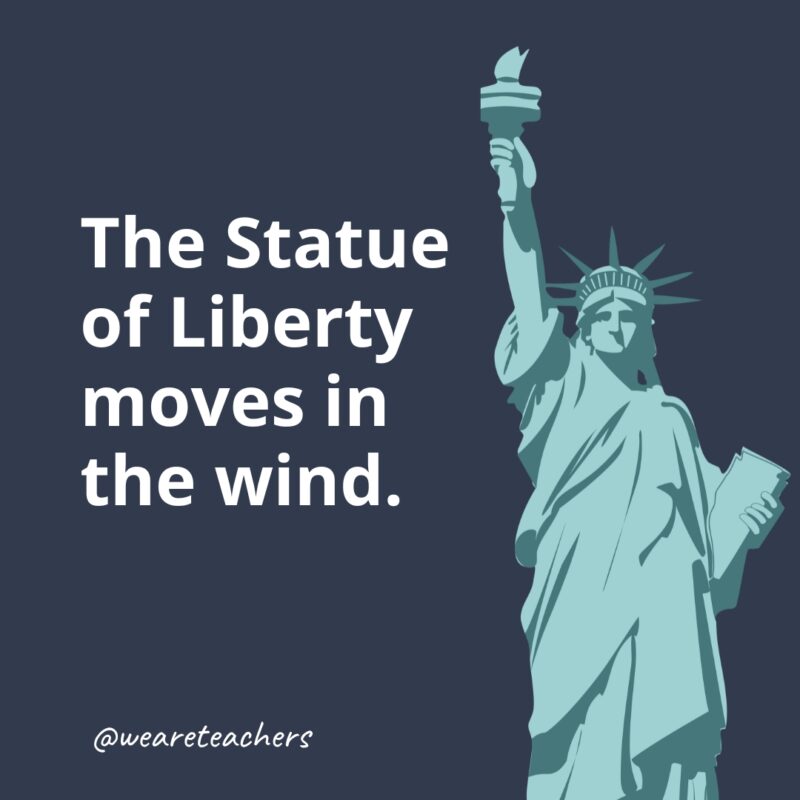
The statue looks stationary, but when it’s windy, it sways 3 inches in the wind, and the torch sways 5 inches.
The Statue of Liberty viewing area is in the crown.
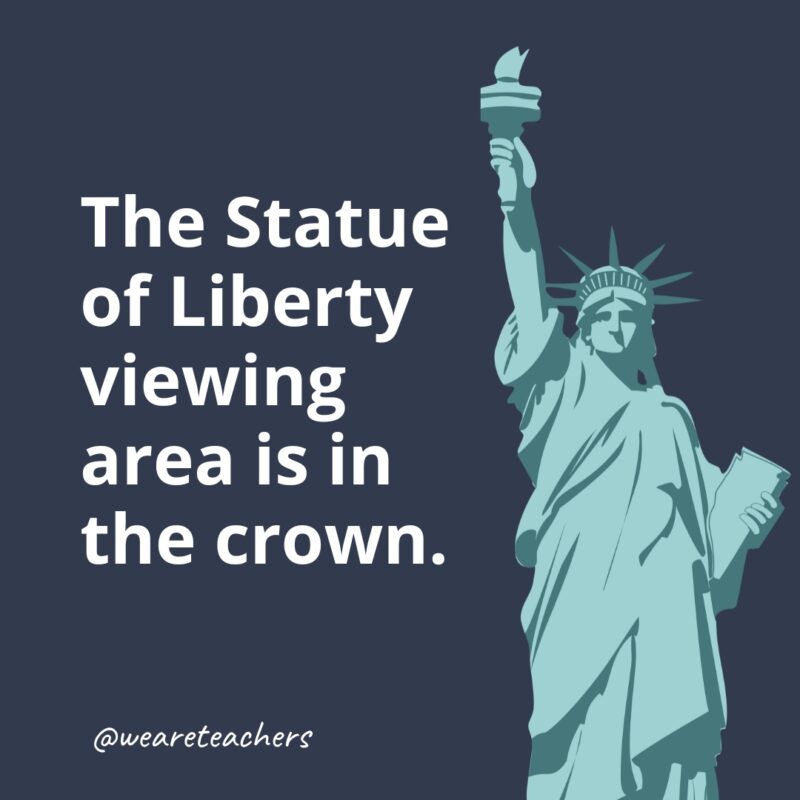
If you visit the statue, you’ll walk up 354 stairs and 22 stories (or take an elevator) to the crown. There, you’ll look out any of the 25 windows.
The engineer of the Eiffel Tower designed Lady Liberty’s spine.
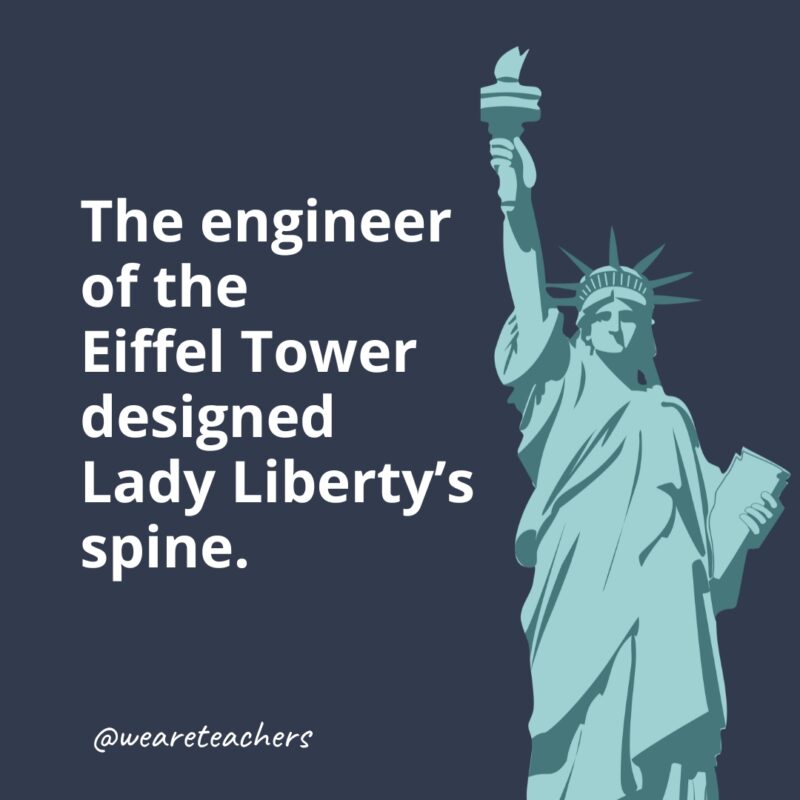
Gustave Eiffel designed the Statue of Liberty’s spine, four iron columns and a metal framework that is overlaid with copper skin. Eiffel later went on to build the Eiffel Tower in Paris.
Lady Liberty’s face was modeled on the designer’s mom.

Frédéric-Auguste Bartholdi, the designer of the Statue of Liberty, used his mother as a model for the statue’s face. He modeled the body after the Roman goddess Libertas.
The Statue of Liberty is full of hidden significance.

The Statue of Liberty’s crown, or halo, has seven rays, which represent the seven seas and the seven continents. The torch symbolizes enlightenment, or the path to liberty. The tablet that she’s carrying has the date July 4, 1776, inscribed on it. She is standing with her right foot raised over a broken shackle and chain, symbolizing her moving away from oppression and slavery.
Lightning strikes the Statue of Liberty a lot.
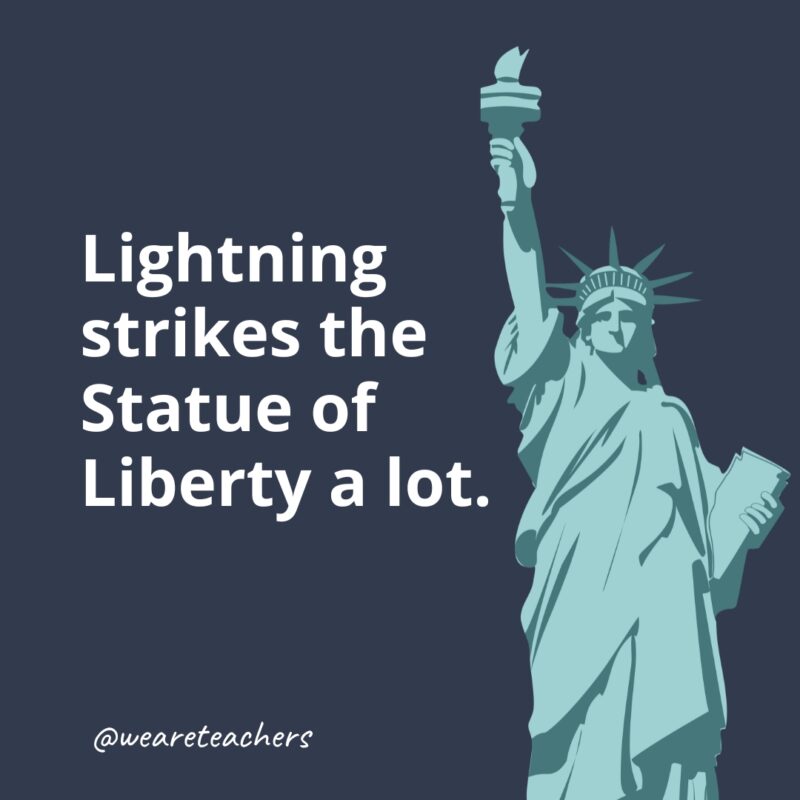
The statue is struck by lightning about 600 times each year.
The Statue of Liberty was two decades in the making.
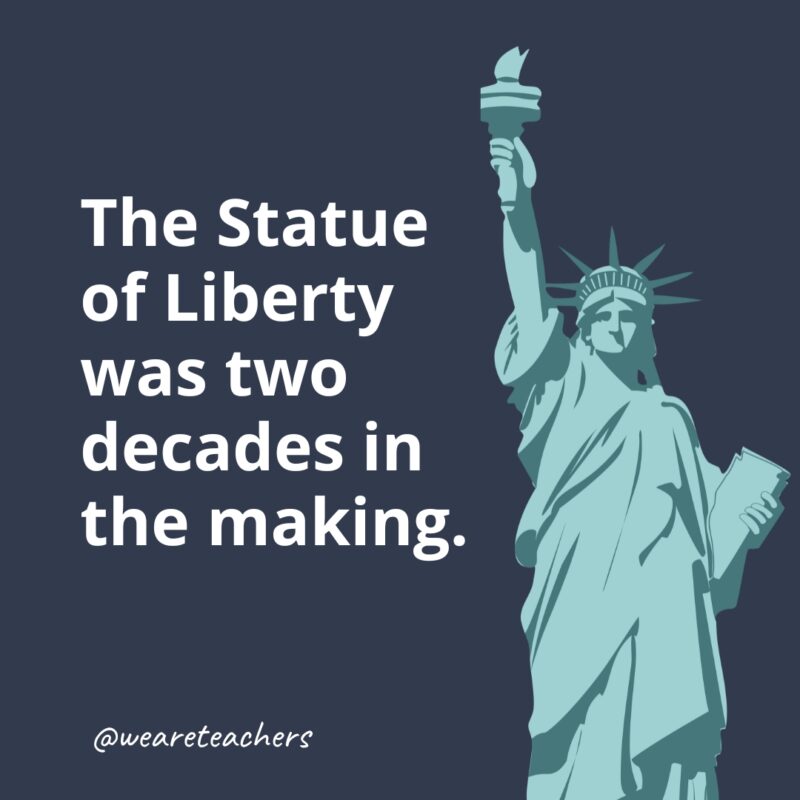
Going from inspiration to reality took 21 years. Édouard René de Laboulaye came up with the idea of a monumental gift to the United States to represent the ideals of freedom and democracy, the centennial of the signing of the Declaration of Independence, and the end of slavery.
Lady Liberty’s torch is off-limits because of an explosion.

We can’t tour the torch today because of a World War I explosion. On July 30, 1916, German spies put explosives in a munitions depot between Black Tom Island (now Liberty State Park) and Jersey City. The blast damaged the statue’s arm and torch and it wasn’t repaired until 1984.
The Statue of Liberty’s torch is 29 feet from the bottom of the handle to the tip of the flame.
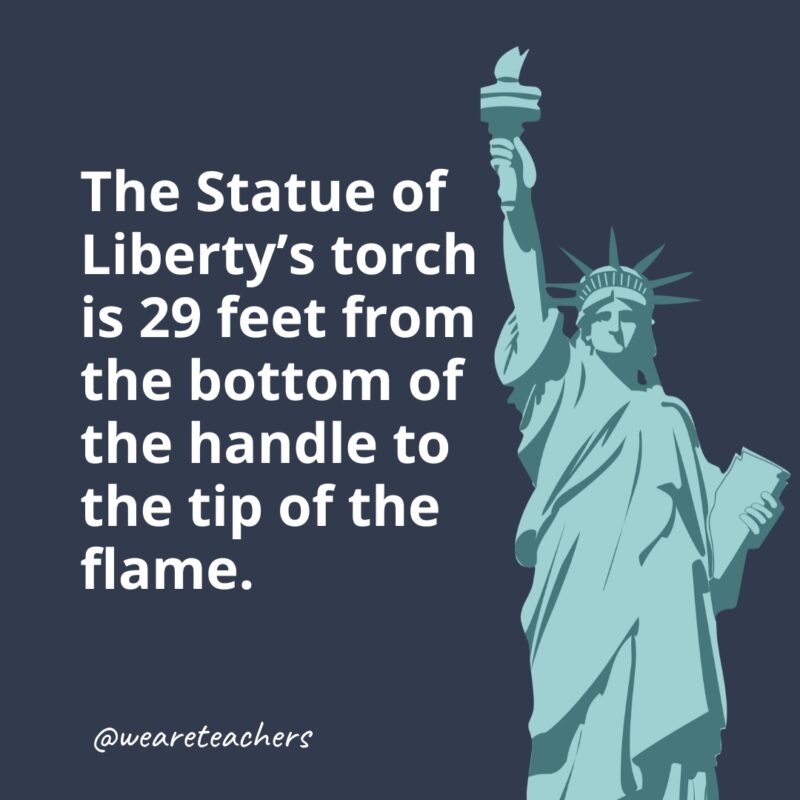
Workers can climb a service ladder inside the arm into the torch. It was open to the public from 1886 to 1916.
Lady Liberty was originally a lighthouse.
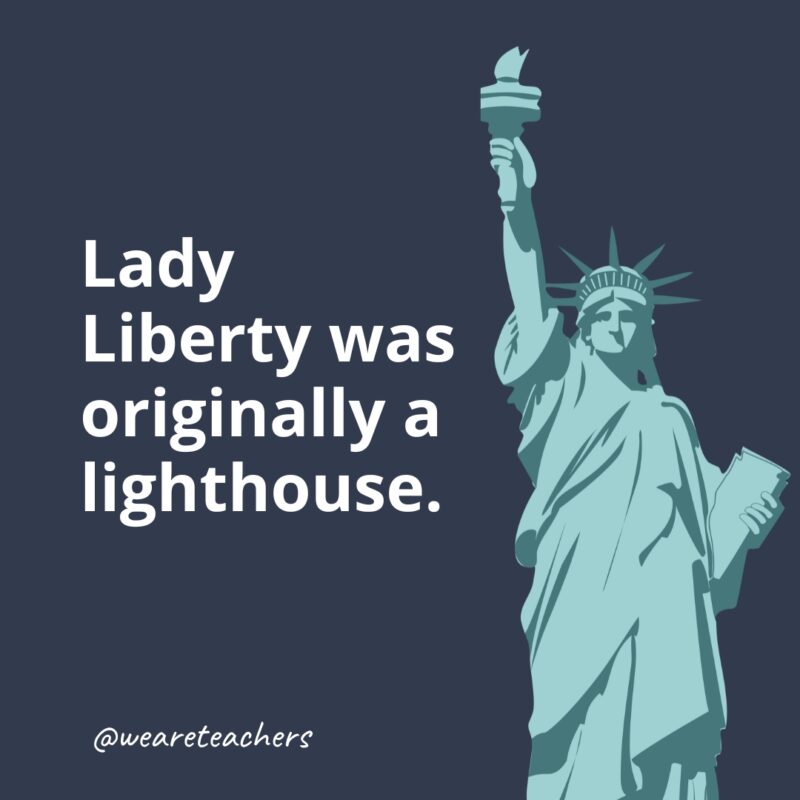
From 1886 to 1902, the statue worked as a lighthouse. Its light wasn’t adequate enough to guide ships after sunset, however, so it only lasted in that job for 16 years.
The Statue of Liberty is among the largest monuments in the world.
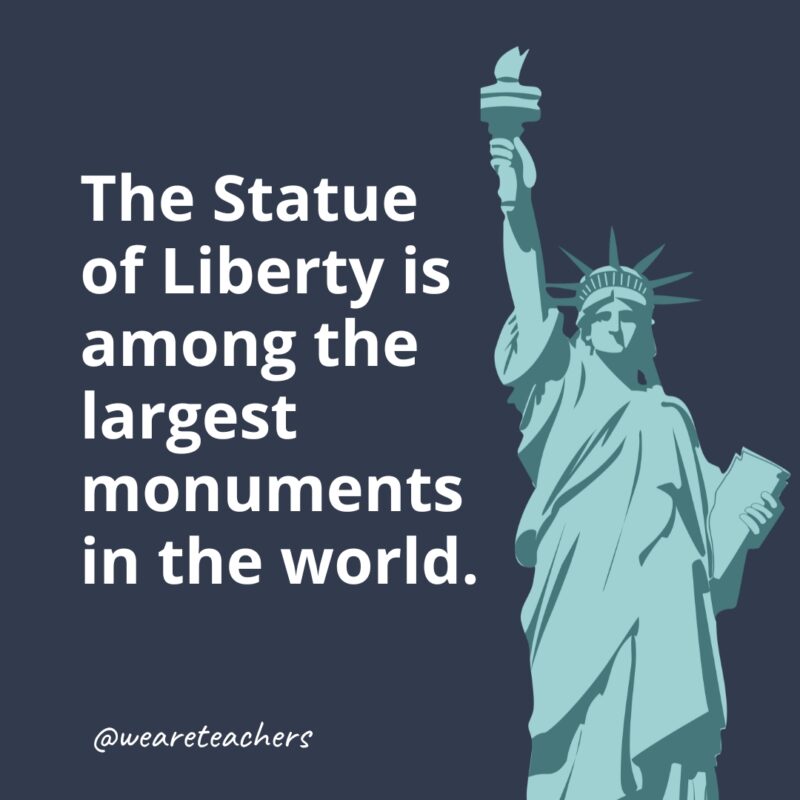
The Statue of Liberty from base to torch is 151 feet tall. With the pedestal and foundation, it’s 305 feet tall, making it one of the largest monuments in the world.
The Statue of Liberty is two pennies thick.
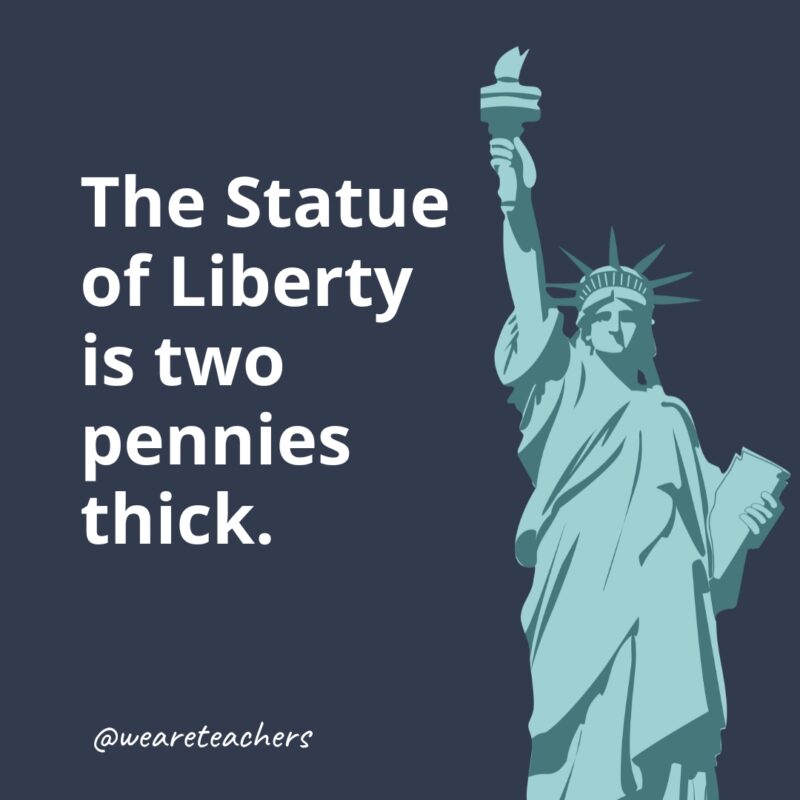
The statue is made of copper that’s 3/32 inch (2.4 mm) thick—as thick as two pennies stacked together. Over time, the copper has oxidized and turned green. The patina, or green coating, is as thick as the copper in some places and is protecting the copper from wearing away. The torch flame is covered in gold.
Fundraising paid for the Statue of Liberty’s pedestal.
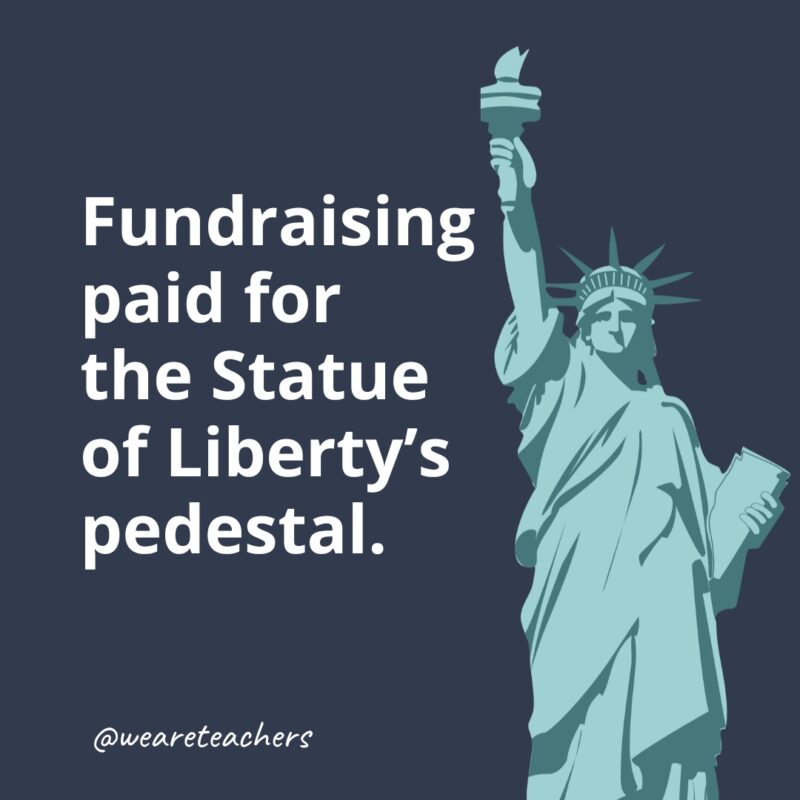
The French paid for the statue, and the Americans paid for the pedestal. Then, President Grover Cleveland and Congress couldn’t agree on funding the pedestal. Cities including Philadelphia, Boston, and San Francisco all started vying for the sculpture. Finally, New York publisher Joseph Pulitzer started a campaign that raised money from 160,000 people, collecting over $100,000 to cover the cost of the pedestal and securing it for New York.
Thomas Edison wanted to make the Statue of Liberty “talk.”
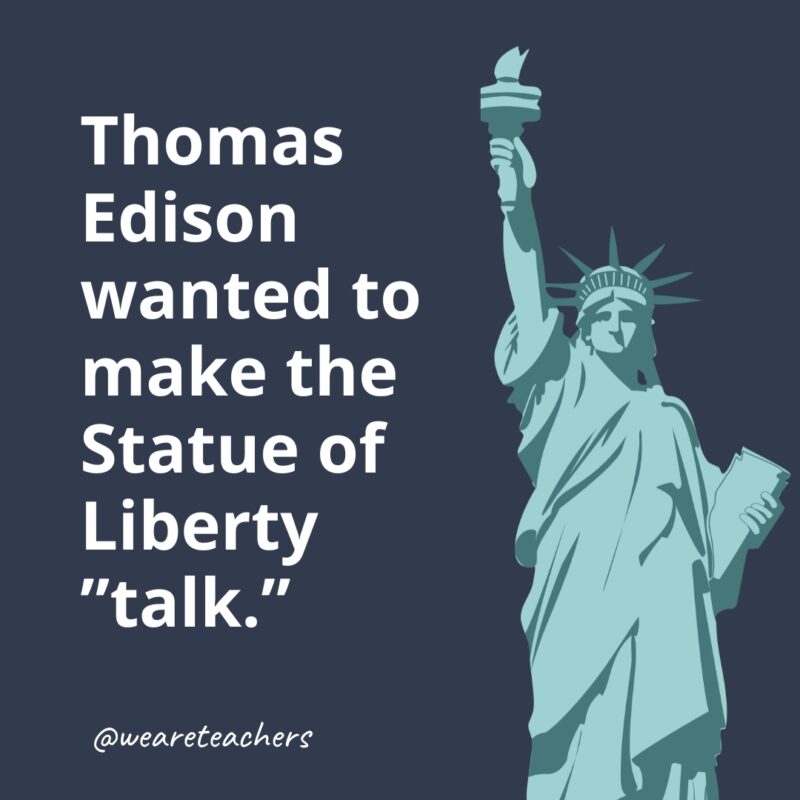
Thomas Edison had the idea of putting a giant gramophone inside the Statue of Liberty so she could “speak.” The speakers he proposed would have projected all the way into Manhattan.
Statue of Liberty is a nickname.
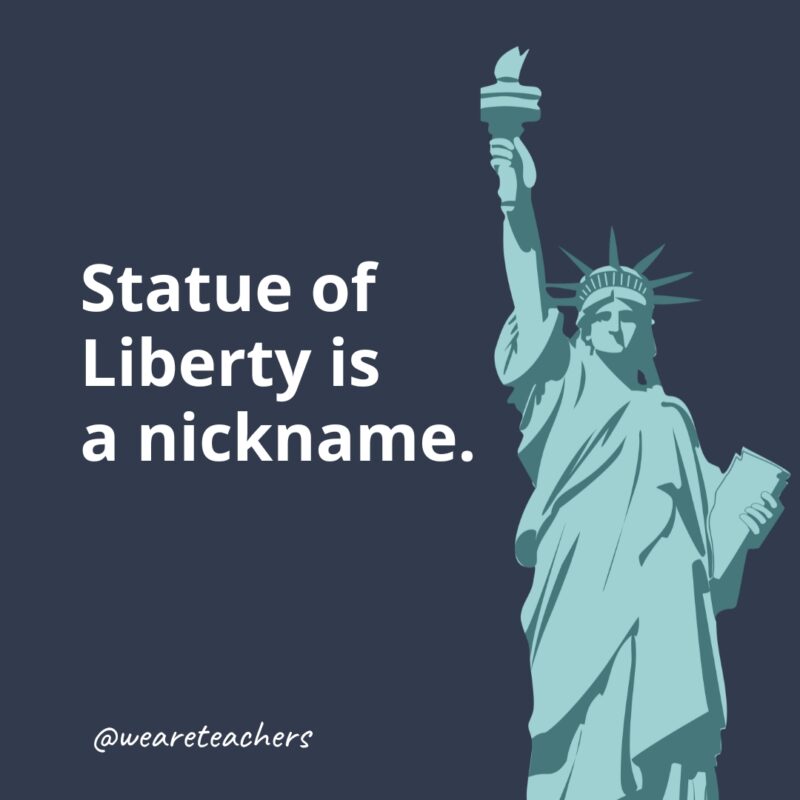
The statue’s full name is Liberty Enlightening the World.
The Statue of Liberty wasn’t a symbol of immigration until the 1900s.

Lady Liberty became a symbol of immigration in the 20th century as it was the first thing that immigrants saw when arriving in the United States.
The Statue of Liberty sits on New Jersey land.

The statue’s base is technically in New Jersey. A pact between New York and New Jersey settled this. Now, it sits on Liberty Island, federal land administered by the National Park Service.
In today’s dollars, the Statue of Liberty would be worth millions.

If we built the Statue of Liberty today, it would take about $2 million to build.
Suffragists protested the Statue of Liberty.
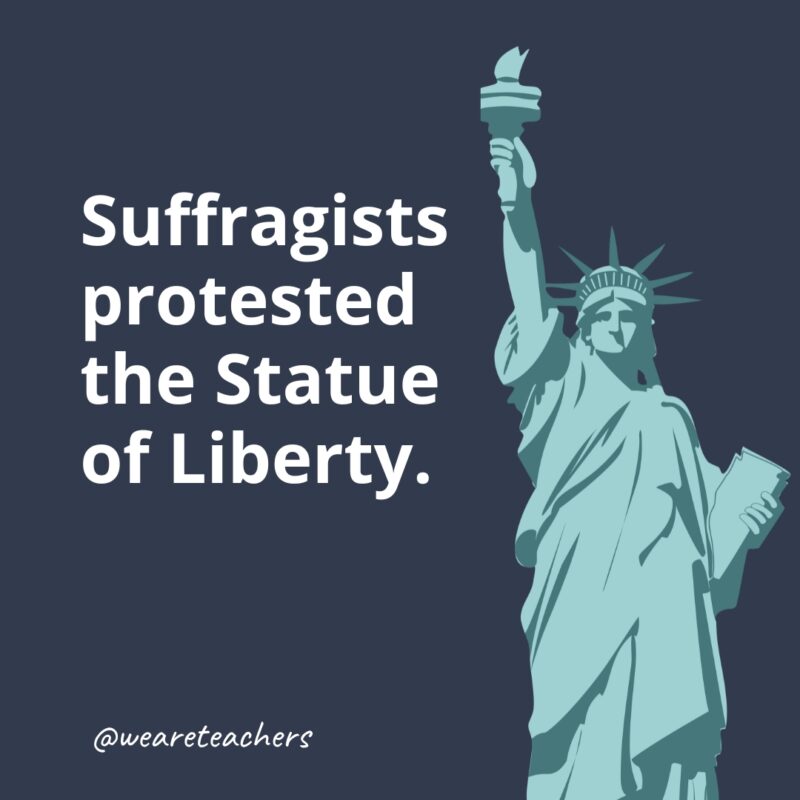
Suffragists interrupted the statue’s grand opening with a rally against the statue of a woman that symbolized freedom when women did not even have the right to vote. (Women would not have the right to vote for another 34 years.)
How do you teach about the Statue of Liberty? Share in the WeAreTeachers HELPLINE on Facebook.
If you liked these facts about the Statue of Liberty and are looking for more fun facts about topics you teach, be sure to subscribe to our newsletters.

